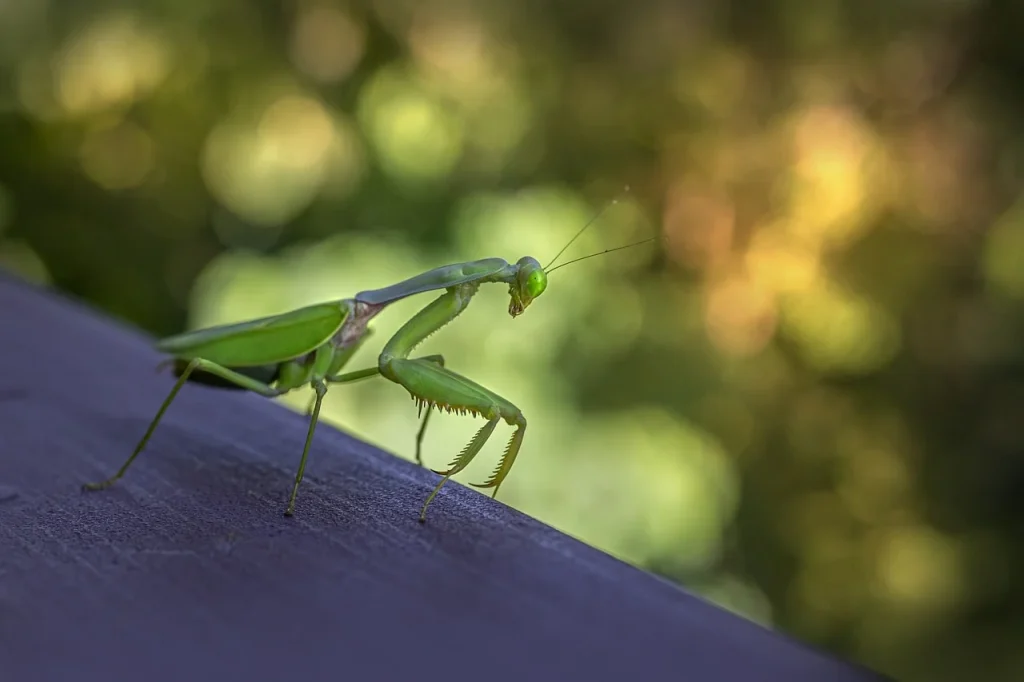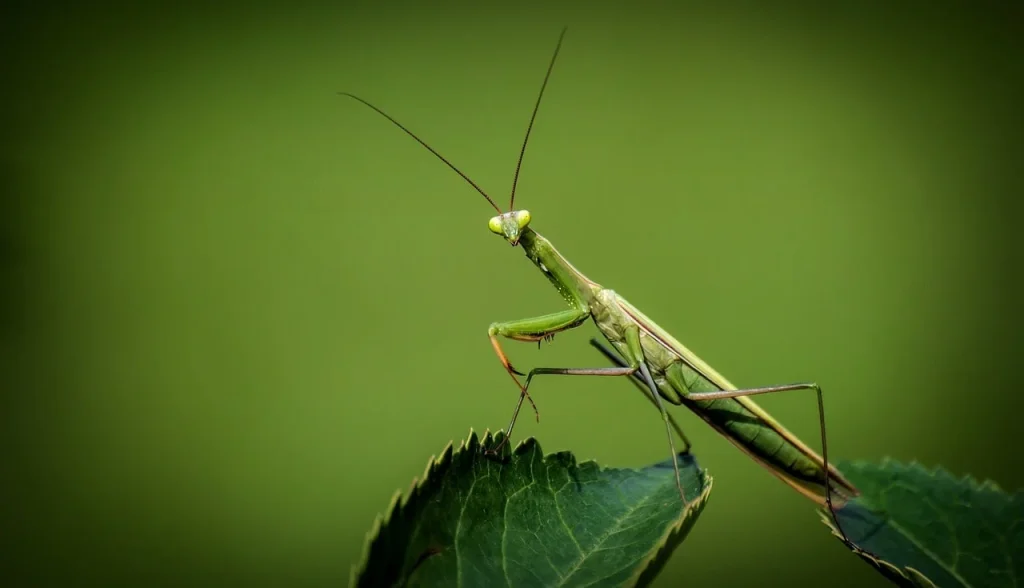
- In captivity, their diet can include standard feeder insects like crickets and worms.
- Visual hunters, they rely heavily on their keen sight during the day.
- Mantises are solitary creatures, coming together only to mate and occasionally to fight.
- They use their coloration not only for camouflage but also for communication during mating rituals.
- They are sensitive to vibrations, which can alert them to the presence of prey or predators.
- In some species, the female produces pheromones to attract males, which can detect these chemicals from several kilometers away.
- They can clean their own faces and antennae using their forelegs, much like cats.
- Studies have shown that they are capable of learning from experience, adjusting their hunting strategies over time.
- When threatened, they stand tall and spread their arms to appear larger, a tactic known as deimatic behavior.
- Entomologists often study them for insights into the evolution of predatory insects.
- Unique in the insect world, some species are capable of associative learning, remembering specific colors associated with food rewards.
- During colder months, they enter a state of dormancy, or diapause, to survive until conditions improve.



9 Comments
very interesting, few things did not know
don’t send me anymore emails how did you get it anyway stop the junk that takes up mt time PLEASE!!!!
I am a science major graduating with honors our of a fine college in Colorado, then California. I truly enjoy these insect articles, particularly the one on the Prey Mantis. A great read! You know I have bookmarked this site for more enjoyable reading. Thank you so much.
I am a science major graduating with honors out of a fine college in Colorado, then California. I truly enjoy these insect articles, particularly the one on the Prey Mantis. A great read! You know I have bookmarked this site for more enjoyable reading. Thank you so much.
It’s not consummating, but consuming. Consummating a marriage is by sexual intercourse. Funny mistake.
Am a nature lover such amazing facts make me glorify our God The Almighty creator of the heavens and the earth
I’ve always been fascinated with the insects. Once I noticed one on my windshield after I’d stopped for fuel.. it was a bright,, lime green color and quite lovely.. i grabbed my cell phone and snapped a few pictures. After I returned home I used a filter to spice up my photos,, put hair on some,, hats on others, etc. I sent them to my granddaughters to enjoy and they did just that! Thanks for sharing the information. P.S. I hope I never see a mantis eating a hummingbird!! They’re my favorites ♡
You said consummating instead of consuming.
Can you post the correct answers? I scored 9/10 both times I took the quiz.